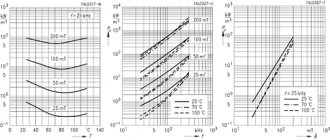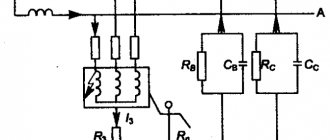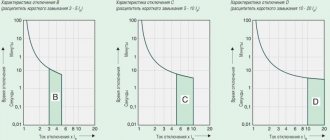To work with electrical installations of any type, you must have sufficient qualifications and have certain knowledge of safety precautions. If to confirm your professional education it is enough to present a diploma, then with the certificate of the electrical safety group, not everything is so simple. What is the peculiarity of the admission and what is the procedure for assigning it, we will describe in detail in the publication below.
First admission group
It needs to be obtained by those workers who are not directly involved in working with electrical equipment, its repair, commissioning and commissioning. This group of employees, before being allowed to perform their job duties, is subject to instructions that include safety rules.
Note! An employee of an enterprise with group 3 and above is authorized to provide instructions. After completing the training and obtaining permission, a record of this is entered in a special journal.
After completing the instructions and receiving permission, a record of this is entered in a special journal.
1st admission group. Junior specialists
Check of knowledge
Testing the knowledge of electrical engineering personnel is mandatory. It is primary when employment occurs. Another reason for its organization is a break in certification of more than 3 years. Inspections are carried out periodically. If these activities are carried out once a year, then their tasks include:
- organization and maintenance of electrical units;
- installation, adjustment, repair.
Administrative and technical specialists performing installation inspections are inspected every 3 years. An extraordinary event is held in the event of new standards, the operation of new equipment, or when transferring to a new position. Procedures are also required at the request of regulatory authorities.
Knowledge testing is carried out by a commission, which is created on the basis of instructions from management. There must be at least 5 people in it. The chairman must have a 5th group. He can be replaced by a responsible employee. During the knowledge test there must be at least 3 commission members. Moreover, there must be a chairman, but his deputy is also allowed to work.
When the inspection is completed, employees are assigned to a group of electrical engineering personnel. This is noted on the certificate. Only after this the employee is allowed to perform his duties. He must follow all instructions, otherwise he will be held liable for violations.
Staff Responsibilities
Electrotechnological personnel are workers who differ in a number of characteristics. They perform electrical energy management. Their activities, for example, relate to electric welding and electrolysis.
Which personnel are classified as electrical technologists? These are workers who carry out activities with portable power tools, electric hand-held machines, and lamps. What other personnel are classified as electrical technologists? These are employees not related to the energy department of the enterprise who have 2 gr. and higher. Their rights and responsibilities are approximately the same as those of electrical personnel.
Employee categories
All employees are divided into electrical and electrical engineering personnel. These are the employees who make the whole process happen. A separate category includes those workers whose activities are not related to the operation of installations.
If work is carried out in which there is a risk of electric shock, then 1 g is approved. electrical safety. This information is recorded in a special journal. However, they are not provided with identification. Assigned 1 g. after briefing, which ends with an oral questioning. Inspections are carried out every year. Electrical safety groups for electrical and electrical engineering personnel allow them to perform a certain type of work.
Employee categories
All employees are divided into electrical and electrical engineering personnel. These are the employees who make the whole process happen. A separate category includes those workers whose activities are not related to the operation of installations.
If work is carried out in which there is a risk of electric shock, then 1 g is approved. electrical safety. This information is recorded in a special journal. However, they are not provided with identification. Assigned 1 g. after briefing, which ends with an oral questioning. Inspections are carried out every year. Electrical safety groups for electrical and electrical engineering personnel allow them to perform a certain type of work.
Which personnel are considered electrotechnical and which electrotechnological?
Electrical technical personnel of enterprises are divided into administrative-technical, operational, maintenance and operational-repair.
— Administrative and technical personnel organize operational switching, repair, installation and adjustment work in electrical installations and manage these works. Administrative and technical personnel may have the rights of operational, maintenance or operational maintenance personnel if they have the appropriate qualifications.
— Operational personnel carry out operational management of the electrical equipment of the enterprise, workshop, as well as operational maintenance of electrical installations. Operational maintenance includes inspection and maintenance of electrical installations, operational switching, preparation of the workplace, access to work and supervision of workers.
— Repair personnel perform all types of work on repair, reconstruction and installation of electrical equipment. The repair category includes personnel of specialized services - testing laboratories, automation and instrumentation services, whose responsibilities include testing, measuring, setting up and adjusting electrical equipment, etc.
— Operational and repair personnel are personnel of production workshops and areas, specially trained and prepared to perform operational work on the electrical installations assigned to them.
Electrical workers under 18 years of age are not allowed to work in electrical installations. Trainees from institutes, technical schools, vocational schools who have not reached the age of 18 are allowed to stay in existing electrical installations under the constant supervision of a person from electrical personnel with an electrical safety group of at least III in installations with voltage up to 1000 V and not lower than IV in installations with voltage above 1000 V. Allowing trainees under 18 years of age to work independently and assigning them electrical safety group III and higher is prohibited.)
Electrotechnological personnel - personnel whose main component in the technological process they control is electrical energy (for example, electric welding, electric arc furnaces, electrolysis, etc.), who use manual electric machines, portable power tools and lamps, and other workers, for whose job description or occupational safety instructions establish knowledge of MPOTEE (where II or higher electrical safety group is required). Managers who are directly subordinate to electrical personnel must have an electrical safety group no lower than that of subordinate personnel. The manager’s task is to provide technical guidance and supervision of the work of electrical engineering personnel.
Full range of occupational safety services
Enter your phone number and I will calculate an estimate for your tasks. Enter without the eight. “Ekaterina Vorontsova’s Bureau” is a professional solution to your occupational safety problems. High quality and on time!
Who is electrical engineering personnel?
When you rarely touch upon issues related to electrical safety, it is difficult to categorize personnel without making a mistake, because the line between electrical and electrical engineering personnel is quite thin.
Electrotechnological personnel include:
- workers of electrical equipment (flaw detectors, welders, electrolysis workers, electrothermal specialists, etc.)
- employees performing maintenance of energy-intensive equipment, performing its adjustment and repair (boiler room operators, mechanics, etc.);
- vehicle drivers;
- machine operators.
This category also includes system administrators and programmers if they perform equipment repairs.
Please note that the electrical safety group of electrical engineering personnel managers must be no lower than that of subordinates in order to competently manage and control personnel.
And each organization must have a list of positions and professions of electrical and electrical engineering personnel, distributing electrical safety groups, which must be approved by the head of the organization.
An example of compiling a list of electrical personnel
If you need a sample list of personnel by group, you can download it by clicking on the link.
Responsibilities of Electrical Technological Personnel
When performing official duties, electrical engineering personnel are administratively subordinate to the immediate supervisor, and operationally – to the person responsible for electrical facilities.
This category of workers should not be involved in repairing the electrical parts of equipment and tools; for this, the organization has repair or operational repair personnel, who are already classified as electrical personnel.
That is why, if a welder’s machine breaks down, he does not have the right to repair it himself. He must stop work, inform his immediate supervisor about this, then make a request for repairs or call an electrician whose training already allows him to carry out this work.
And since electrical engineering personnel include workers of various professions who use power tools and operate equipment, in order to safely perform their duties they must have appropriate training and, among other things, be guided by labor safety instructions.
Qualification of electrical engineering personnel
Electrotechnological personnel must have the necessary training and education in their working profession or as a specialist. In this case, training and certification for group 2 in electrical safety can be carried out by the enterprise commission.
If an employee has basic general or secondary education, then group 2 in electrical safety can only be assigned by the commission of the training center (clause 1.4.7. PTEEP).
Employees must confirm their knowledge of electrical safety annually. In addition, you need:
- timely instructions;
- occupational safety training;
- first aid training;
- internship;
- medical examinations.
Electrical personnel should not be under 18 years of age, because the area of responsibility is higher and the risks of injury increase compared to electrical safety group 1.
Fourth admission group
This category of persons is approved for electrical safety as personnel to work on installations with voltages over 1000 V. An employee who has this right has the right to bear responsibility for electrical facilities and train young employees.
| IV | |
| Personnel requirements | Conditions of assignment |
|
|
Access groups
The group number depends on the length of service, qualifications, education, knowledge and practical skills, according to the job description of the operational and repair personnel.
Group I is assigned after an introductory briefing, an oral knowledge test, as well as a test of knowledge of first aid and the theory of safe work with certain electrical installations.
Group II can be assigned to an employee after completing a training course lasting seventy-two hours. After completing the course, the employee is required to pass a short exam, where he must show the mentor the knowledge he has acquired in practice. In addition, it is necessary to show all the necessary knowledge about the technical characteristics of electrical equipment and how to protect yourself from electric shock.
Group III can be obtained after gaining work experience (from one to three months) as operational and repair personnel in the first or second group. To obtain the third group of admission, an employee must know the maintenance procedure and the operating principle of electrical equipment. Know the safety regulations, list of requirements and responsibilities for each range of work. Be able to properly monitor the operation of equipment and operate the device safely.
Group IV can be obtained after four to six months of work in the previous group. In addition, during the exam you need to show knowledge of technology at the level of a technical school course, know the rules of regulations on labor protection, operation of equipment, fire safety and provision of first aid if necessary. Study the equipment plans of the area where the employee works and be able to carry out safety measures, as well as be able to competently observe the work of other workers. In addition, master the skills of conducting briefings for staff.
Group V is assigned after working with the previous group for one to two years. The knowledge that an employee must have: know the technical characteristics, diagrams and operating rules of equipment within the scope of his position, as well as technological and production processes. Improve methods, clearly state requirements and tasks for employees, be able to train personnel in the basic principles of technology and fire safety.
Based on the results of each exam, the employee is issued a special certificate confirming the group and level of access to the equipment.
Principles of training
Before performing work, electrical engineering personnel are trained. These procedures require training, which may vary depending on the category. Before carrying out their activities, it is imperative that appropriate training is carried out in place. This norm also applies if there is a break in activity of 1 year or more.
Electrotechnological personnel must undergo training. An electrical safety group is assigned after appropriate testing. The following activities must be performed:
- initial, introductory, repeated, targeted and unscheduled briefings;
- preparation for the profession - the internship lasts 2-14 shifts;
- checking the norms and regulations on security, industrial safety;
- special training;
- control training.
Specialists must have professional education to perform their activities efficiently. Over time, it is necessary to undergo retraining.
Internship
Before undergoing duplication, the employee must undergo an internship.
The internship takes place under the supervision of the most experienced and qualified employee. This procedure is also carried out according to a specific program, which differs for each position. The duration of the internship ranges from two to fourteen work shifts. The number of shifts is determined by management. The team leader may exempt a subordinate from undergoing an internship if his work experience is more than three years.
The duration of this event is set individually, depending on the education, work experience and qualifications of the employee.
Which personnel belong to electrical engineering and electrical technology?
Electrical personnel
– administrative-technical, operational, operational-repair, repair personnel who organize and carry out installation, adjustment, maintenance, repair, control of the operating mode of electrical installations.
— Administrative and technical
– managers and specialists who are entrusted with the responsibility for organizing technical and operational maintenance, carrying out repair, installation and commissioning work in electrical installations.
— Operational
– personnel performing operational management and maintenance of electrical installations (inspection, operational switching, preparation of the workplace, admission and supervision of workers, performance of work in the order of routine operation).
— Repair
– personnel providing maintenance and repair, installation, adjustment and testing of equipment.
— Operational maintenance
– repair personnel specially trained and prepared for operational maintenance of the electrical installations assigned to them within the approved scope.
Operation of electrical installations must be carried out by trained electrical personnel.
Electrotechnological personnel
– personnel whose main component in the technological process they control is electrical energy (for example, electric welding, electric arc furnaces, electrolysis, etc.), who use manual electric machines, portable power tools and lamps in their work, and other employees for whom the official instructions or labor protection instructions establish knowledge of safety rules when operating electrical installations (where II or higher electrical safety group is required).
Who in the electrical depot is responsible for storing, maintaining, and checking electrical protective equipment?
Responsible for electrical equipment, an employee appointed by the technical manager for this position with an electrical safety group of at least 3. Tool workers.
studopedia.ru>
Main conclusions
Administrative and technical personnel, as a rule, have the highest groups in electrical safety, 4 or 5. An occupational safety specialist who does not have more than 3 years of work experience also belongs to the APT, but can only count on group 3 in electrical safety.
Confusion often arises when administrative and technical personnel mean all engineering and technical workers of an enterprise. But that's not true. ATP are employees who take part in the operation of an electrical installation, are appointed responsible for the safe performance of work in electrical installations, or are supervisory persons.
There are a lot of nuances and small details on electrical safety, and if you need additional information, you can read other notes in the “Electrical Safety” section.
I wish you safe and efficient work!
If you found this article helpful, I would be grateful if you share it on social networks or leave a comment. And if you have questions, ask them, I will definitely answer everyone.
How a group is assigned
Certification for permission to work in the second electrical safety group is carried out in accordance with regulations. For this purpose, a commission is created on the basis of an administrative document. Each member of the AC must have permission recorded in the certificate. A time is set for taking the exams and the opportunity to prepare is provided.
Where do they take the electrical safety group?
The exam is carried out at the enterprise, but only if there is a certificate to conduct it. If it is not possible to take tests on your own, then certification is carried out in specialized training centers that have permission to engage in this type of activity.
Who can take the exam
Knowledge testing is carried out on a commission basis. The minimum number of members must be at least three, including the chairman.
Basic conditions for creating a commission:
- If there are electricity receivers with a voltage of less than 1000 V, the chairman must have at least clearance group IV.
- If the voltage indicator is more than 1000 V, then the group assigned to the chairman must be at least V.
- The commission may include production site managers and occupational safety specialists.
- All members of the commission must have an electrical safety group of at least second.
- Certification of the chairman and members is carried out at Rostechnadzor or at the enterprise, but in the presence of an inspector.
Exam program for obtaining admission
Training is carried out according to the Program developed at the enterprise and approved by Rostechnadzor.
The training includes the following materials:
- Primary requirements.
- How is permission to work granted?
- List of technical documentation required for work.
- Concepts about electrical safety groups.
- Occupational health and safety during work.
- Actions in case of emergency situations: accident, incident, accident.
- Provide first aid until medical professionals arrive.
When preparing a program, you can use a standard one, and also take into account the specific capabilities of the organizational structure.
Training
Electrical Safety Exam
Knowledge is checked by commission and admission options are as follows:
- In the enterprise organization commission.
- In a specialized training center, and the composition should include an inspector from Rostekhnadzor, who monitors the safety during the operation of technical devices.
- Directly in RTN, geographically located.
The management of the organization appoints commission members to conduct certification. The chairman, as a rule, is the employee responsible for the energy management of the facility. All members of the commission must have certificates with a mark of certification.
Knowledge testing is carried out using tickets specially designed for the Training Program. Upon successful completion of the test, an entry is made in the protocol and a certificate is issued. If the certification is repeated, then a record of its completion is made.
Knowledge test result
The results of testing the knowledge and skills of employees are prepared according to the following algorithm:
- The training center of the enterprise or a third-party organizational structure approves the form of the protocol and certificate. The established forms of documents are placed in regulations.
- Information about passing tests is entered into the journal.
- Data on the inspection performed are recorded in the protocol: the employee’s surname and initials, job title, which electrical safety group was assigned, when the next certification is required.
- The results of passing the tests are entered in the certificate: the document number, the name of the enterprise, the surname and initials of the employee in full, his position when the document was issued are indicated; the date of the knowledge assessment, the reason for the event, which group was assigned, the assessment, the deadline for the next certification is indicated.
The certificate is issued to the employee.
Where is the examination for the electrical safety group carried out, and who will supervise it?
The group is assigned based on the exam results (this is valid for groups from 2 to 5). The body that is authorized to conduct training courses for specialists and take exams for them is a special division of Rostechnadzor.
The company itself, which is interested in improving the qualifications of its employees, sends for training.
As soon as an employee has successfully completed the training program, he is given a special mark on the certificate of the established form (in accordance with the order of the Ministry of Labor of the Russian Federation).
Important! The resulting category is valid for the entire period until the employee’s position is changed. The duration and price of training (advanced training) for electrical safety approval and the duration of training depend on the group that the employee needs to receive
The duration and price of training (advanced training) for electrical safety approval and the duration of training depend on the group that the employee needs to receive.
The minimum period is 40 academic hours, and the maximum is 72 academic hours. The cost varies from 4,700 rubles and reaches an amount of 5,700 for higher categories and for those works that are carried out on high-voltage equipment.
Certificate of assignment of admission group
Tasks of administrative and technical personnel in electrical safety
Types of electrical safety personnel: categories and definition
The tasks of the ATP include:
- provision and control of technical and operational maintenance of electrical installations;
- safe energy supply;
- carrying out repair and installation work on the device.
Employees can also carry out the activities of operational and maintenance personnel:
- carrying out work on assembly, installation, dismantling, and repair of equipment;
- performing operational switching;
- putting the device into operation to ensure the workflow of individual departmental structures and the enterprise as a whole;
- workplace preparation;
- determining the level of personnel training;
- access of workers to the operating installation;
- checking work on electrical installations in accordance with the rules;
- organization, control of urgent types of work on equipment that have repair or preventive significance;
- regulation of the activities of specialized services conducting device testing.
Principles of training
Before performing work, electrical engineering personnel are trained. These procedures require training, which may vary depending on the category. Before carrying out their activities, it is imperative that appropriate training is carried out in place. This norm also applies if there is a break in activity of 1 year or more.
Electrotechnological personnel must undergo training. An electrical safety group is assigned after appropriate testing. The following activities must be performed:
- initial, introductory, repeated, targeted and unscheduled briefings;
- preparation for the profession - the internship lasts 2-14 shifts;
- checking the norms and regulations on security, industrial safety;
- special training;
- control training.
Specialists must have professional education to perform their activities efficiently. Over time, it is necessary to undergo retraining.
Responsibilities of operational and repair personnel
The main responsibility is to quickly respond and carry out repair and maintenance actions on assigned installations. The exception is duty, which is not carried out at these installations.
Operative workers undertake:
- carry out certain activities to prepare the workplace;
- switch operating modes of technical equipment;
- preventive inspection of equipment;
- repair and install devices;
- obtaining access to colleagues (depending on the group).
Operational and repair personnel bear a great responsibility for the safe work of employees and their own in particular, which is safe for life and health.
Specifics of briefings
Electrotechnological personnel undergoes:
- Instructions: primary, introductory - at the workplace, repeated, targeted, unscheduled on health and safety.
- Preparation for a new profession/position with on-site training. The duration of such an internship is 2-14 shifts.
- Testing knowledge of norms, security rules (PTE, POT, PUE), industrial safety regulations and other documents to the extent required for the position.
- Duplication lasting 2-12 shifts.
- Special training.
- Control training (fire and emergency).
Electrotechnological personnel also receive additional professional education to improve their skills on a continuous basis.
Duplication
Duplication of operational and repair personnel is a job after additional internship and another test of the employee’s knowledge. Such a procedure is prescribed by the commission in the event of a break (more than six months) in work or in other cases if required by management.
During duplication, basic knowledge regarding working with electrical installations and safety rules in the workplace is tested. This procedure is carried out according to the program, taking into account the regulations on operational and repair personnel approved by management.
Permission to duplication is issued by management with prior notification of all necessary authorities, as well as third-party organizations with which negotiations are ongoing.
Who can provide training to such employees?
A responsible occupational safety specialist has the right to conduct training in an organization with non-electrical personnel.
As part of these events, employees are taught the basics of behavior in the event of emergency situations, the basics of legislation, safety precautions, rules for providing first aid and rules for handling equipment.
The types of briefings depend on the nature of the employee’s work and position, as well as the electrical safety category assigned to him.
A labor protection engineer must have the full range of knowledge in this field and regularly undergo advanced training in special training centers or educational organizations.
This specialist is appointed either from among the workers themselves or assigned to a separate position.
Instructions on electrical safety for non-electrical personnel can also be carried out by the director of an organization with a small number of personnel, while the director himself must have certain knowledge in this area.
Frequency of instructions
Considering the specific nature of the activity, the legislation does not strictly regulate the conduct of briefings in the field of electrical safety for non-electrical personnel.
However, the practice and recommendations of government supervisory authorities regulate the conduct of safety training at least once a year.
At the same time, the period of implementation can be reduced by coordinating this issue with the bodies of the trade union organization.
Training procedure
Testing the knowledge of administrative and technical personnel when applying for a job is mandatory.
The group of assigned qualifications depends on the type of education, practice, level of knowledge, and work experience:
- 1 group. Assigned to an employee who has an initial level of knowledge. An employee can turn on/off electrical appliances and provide emergency assistance in case of electric shock to a person.
- 2nd group. Assigned after an examination test of knowledge of the design of devices and operating principles.
- 3rd group. Assignment of a category confirms the employee’s knowledge of the design of electrical appliances and independent maintenance without the help and participation of other employees. This group can perform the duties of the ATP.
Electrical diagram
- 4th group. To assign a group, an employee of category 3 can undergo certification no earlier than six months later. The employee must learn the basics of electrical installations, as well as the diagrams of the area being served. During certification, knowledge in the field of electrical safety and labor protection is tested.
- 5 group. To obtain this category, an employee must work with the fourth group for more than 2 years, having studied the field of technical operation of equipment and production schemes. A prerequisite for obtaining the fifth group is the implementation of safe work and supervision of the operational and repair team when performing work.
Additional Information! The ATP also compulsorily studies the labor protection instructions every six months. Training takes place in accordance with the program approved by the training center. Knowledge testing on labor protection is carried out at least once every 3 years, advanced training is carried out once every 5 years.
Check of knowledge
Testing the knowledge of electrical engineering personnel is mandatory. It is primary when employment occurs. Another reason for its organization is a break in certification of more than 3 years. Inspections are carried out periodically. If these activities are carried out once a year, then their tasks include:
- organization and maintenance of electrical units;
- installation, adjustment, repair.
Administrative and technical specialists performing installation inspections are inspected every 3 years. An extraordinary event is held in the event of new standards, the operation of new equipment, or when transferring to a new position. Procedures are also required at the request of regulatory authorities.
Knowledge testing is carried out by a commission, which is created on the basis of instructions from management. There must be at least 5 people in it. The chairman must have a 5th group. He can be replaced by a responsible employee. During the knowledge test there must be at least 3 commission members. Moreover, there must be a chairman, but his deputy is also allowed to work.
When the inspection is completed, employees are assigned to a group of electrical engineering personnel. This is noted on the certificate. Only after this the employee is allowed to perform his duties. He must follow all instructions, otherwise he will be held liable for violations.
How is it different from electrical engineering?
The difference between electrical and non-electrical personnel lies in direct contact while working with complex technical units that are under the influence of electric current, require special handling skills, and can also cause irreparable harm to health.
Non-electrical personnel, if they interact with equipment, do so only as operators; they do not carry out preventive maintenance and repairs, and do not directly interact with dangerous currents.
Employees of the electrical engineering group must undergo several types of briefings, receive the appropriate document before work - a work permit, and also undergo specialized training in training centers or educational institutions.
Also different is the use of personal protective equipment and other protective factors during work involving the risk of injury or other harm.
Another difference is the very nature of the equipment: if for non-electrical workers it most often acts as office or household equipment, then for electrical personnel it is most often complex industrial equipment, electrical networks and other complex units, the work with which requires special skills and abilities.
Do I need to obtain an electrical safety permit?
When carrying out routine activities with non-hazardous equipment, there is no requirement to obtain an electrical safety clearance for non-electrical personnel.
There is no such requirement in federal legislation, since there is no obligation or special knowledge when performing work functions with office equipment that does not have high voltage.
However, if an employee is assigned to operate dangerous devices that are under the influence of electric current and may pose a danger to life, in addition to undergoing training procedures, such an employee must also receive the appropriate permit, however, he will be transferred to another group of personnel.
List of positions to which group 1 is assigned
At the request of the manager, in case of production necessity, non-electrical personnel may be assigned 1 electrical safety group.
The list of positions that belong to group 1 of electrical safety is approved by the management team, based on the nature of the work performed.
When interacting with electrical devices on a daily basis, for example, in the office, an employee can receive this group by undergoing appropriate training and instruction from a responsible occupational safety specialist, which will give him both rights and responsibilities.
To assign electrical safety category 1, it is necessary to issue an appropriate order for the organization and carry out appropriate personnel training with this document in the form of briefings.
After this, another order should be issued to assign the appropriate category listing the positions and personal data of the employees.
For whom is it necessary to assign group 2?
There are often cases when workers, due to their immediate duties, encounter devices in their work activities that may pose an increased danger.
For such cases, assignment to a higher category 2 is required. The procedure is similar to the first one - issuing an order and conducting training events, however, the employee’s knowledge must be deeper and take into account the specifics of the enterprise’s activities.
To do this, you need to undergo appropriate training at a training center, and then certification of knowledge and receive a standard certificate.
At the same time, the frequency of training must also be observed, which the employee must undergo at least once every three years.
The initiator of obtaining group 2 admission must be the employer due to the correspondence between the citizen’s job duties and his functions in the organization.
Staff Responsibilities
Electrotechnological personnel are workers who differ in a number of characteristics. They perform electrical energy management. Their activities, for example, relate to electric welding and electrolysis.
Which personnel are classified as electrical technologists? These are workers who carry out activities with portable power tools, electric hand-held machines, and lamps. What other personnel are classified as electrical technologists? These are employees not related to the energy department of the enterprise who have 2 gr. and higher. Their rights and responsibilities are approximately the same as those of electrical personnel.
Who are the operational maintenance personnel?
This position can be occupied by specially trained, highly qualified and trained personnel capable of carrying out operational work on the repair, adjustment and installation of electrical installations assigned to them.
Operations and repair personnel belong to the category of “electrical” employees. There are five levels of access in this work, which are divided into groups. An employee of each group has his own powers and responsibilities.
Electrotechnological personnel
Workers in this category are distinguished by a number of characteristics. First of all, the electrical engineering personnel includes employees for whom electrical energy is a key component of the processes controlled by them. Their activities, for example, may be associated with electric welding, electrolysis, the operation of electric arc furnaces, etc. The list of electrical technological personnel also includes employees who use portable power tools, electric hand-held machines, lamps and other workers for whom knowledge of industrial equipment is established in the job description. Employees who do not belong to the energy department of the enterprise and have II gr. and above, obey him. At the same time, in their duties and rights they are equal to electrical personnel.
Check of knowledge
It may be primary. Electrotechnological personnel consisting of new employees are subject to such testing. Another reason for its implementation is a break in certification lasting more than 3 years. The check may also be periodic. It, in turn, is divided into regular and extraordinary. In the first case, electrical engineering personnel are tested once a year if their tasks include:
- Direct organization and performance of maintenance work on existing electrical units.
- Carrying out installation, adjustment, repair, preventive testing.
A similar period is established for employees who have the right to issue orders, orders, and conduct operational negotiations. Administrative and technical personnel and occupational safety specialists authorized to inspect installations are inspected once every three years. Extraordinary certification is carried out regardless of the date of completion of the previous one in the following cases:
- When newly developed or revised rules and regulations are put into effect.
- When installing new equipment, changing/reconstructing main technological and electrical circuits. The expediency and necessity of conducting an extraordinary inspection is determined by the responsible person.
- When transferring/assigning to another job if the assigned duties require knowledge of an expanded list of rules and regulations.
- If employees fail to comply with the requirements of regulations on occupational safety.
- At the request of state supervision authorities.
- Based on the conclusion of the commission that investigated an accident involving people or disruptions in the functioning of a power plant.
- When upgrading your qualifications to obtain a higher group.
- If there is a break in activity in this position for more than six months.
Additionally
Testing the knowledge of electrical and electrical engineering personnel is carried out by a commission. It is formed by order of the head of the enterprise. The commission must include at least five people. At the same time, its chairman must have group V at voltages above/up to 1000 V and IV at voltages only less than 1000 V. As a rule, he is the person responsible for the electrical part. When directly testing the knowledge of enterprise employees, at least 3 members of the commission must be present. In this case, the chairman must participate in the event. The presence of his deputy is allowed. Upon completion of the inspection, groups of electrical engineering personnel (II to V) are assigned. The corresponding mark is made on the certificate.
Duration and essence of duplication
The duration of duplication for operational and repair personnel with management functions (groups IV and V) is at least twelve work shifts. For the first, second and third groups from two to twelve work shifts. A more precise deadline for completing this procedure is determined by the authorities and the chairman of the examination committee.
During duplication, after an oral knowledge test, the employee must undergo fire and emergency training with a note in the logbook. The topic of training is determined by the program. In case of an unsatisfactory assessment, the duplication process is extended for a period of no more than twelve work shifts, and additional training activities are assigned.
Without a certificate of successful completion of this procedure, an employee is not allowed to work.










